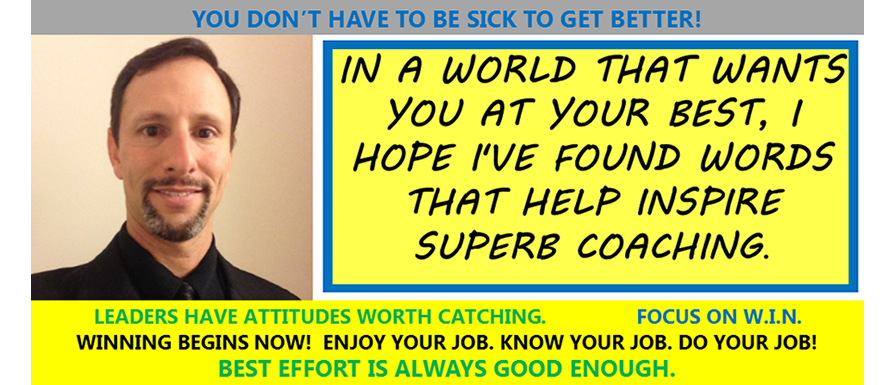Think Useful: Confidence is an Attitude and Attitudes are a Choice
Thoughts Determine Attitudes, and a Confident Attitude Sets the Stage for a Peak Performance
I call them “green light" indicators for "Go! Go! Go!" They are the variables, mostly internal, that let an athlete know that he is likely to perform up to potential. The opposite “red light" indicators predict a poor performance. Awareness of these “green” and “red lights” enables athletes to keep going when they are likely to do well and stop to change something when they are not. Examples of "green lights" are relaxed, focused, and having fun. Common "red lights" include frustrated, thinking too much, impatient, and trying to do too much. The most common indicator, however, is confidence or a lack thereof. From old to young, softball to football to ping-pong, and professional to recreational, athletes know that they are more likely to play great when they are confident and are more likely to stink it up when they are not.
Since confidence is so important for performing well, it is quite useful to know where it comes from. Performance-specific confidence comes from several factors including global confidence (self-esteem) and preparation. These are critical, but will not change play-by-play. Recent experiences do change…dramatically. Most athletes think that confidence comes from experiences and if they think that, they’ll probably be correct because they will naturally emphasize what is recent. Be careful: this is a bad self-fulfilling prophecy if recent experiences are poor. Consistent performers know there is a better way: it’s not what happens that determines your confidence, it's the way you think about what happens.
This distinction may seem subtle, but it's huge because one is controllable; the other is not. We simply cannot change the past, but we can control how we think about it. We can learn to let go of mistakes and replay good performances in our mind. The simple and profound formula for dealing effectively with adversity is: (1) Learn from it. (2) Release it. Releasing the negative memory (by simply moving on to W.I.N.: What's Important Now, or if that doesn't work, by forgiving to forget) prevents that negative snowball effect. Instead of emphasizing the mistake (failing to release it from our mind), we can think about past great performances, even if they were a long time ago. Normal behavior is to emphasize the most recent thing, but your goals have nothing to do with being normal. (I know this because you're reading this article.) Make it a priority to learn the many ways that you can emphasize positives and de-emphasize negatives in your patterns of thought. This is exactly what the greatest athletes in the world do! Michael Jordan said, "If I miss my first five shots, I think back to a game when I missed my first five and made my next ten, and I bring that confidence into this moment."
3 Pre-requisites for Consciously Increasing Confidence
- Understand that your thoughts determine your attitudes, which then directly and significantly affect the quality of your behaviors.
- Be aware of your thoughts and attitudes.
- Develop an Optimistic Explanatory Style, where you think about what happens in life by this formula: emphasize the positives and de-emphasize the negatives.
3 Ways to have an Optimistic Explanatory Style
(Notice the perfect imbalance of each.)
- Permanence - A good thing is likely to happen again. A bad thing is probably just a one-time event.
- Pervasiveness - A good thing in one area is likely to lead to good things in other areas. A bad thing in one area has nothing to do with what is likely to happen in other areas.
- Personalization - A good thing happened because of me. A bad thing happened, but it wasn't because of me.
Note: Personalization can be valuable because there are many times when we just don't know if the outcome was because of me or not, so invoke this formula. This DOES NOT mean that it is acceptable to make excuses. It's not.
IN-GAME COACHING POINT - Use your communications to increase your athletes' confidence. The coach's job is to help the players perform at a best effort level. There is certainly a time for yelling and constructive criticism, but there is a time to withhold correct information, too. Athletes will emphasize in their mind whatever their coach tells them (verbally and non-verbally). Therefore, it is often more useful to share affirmations than to point out mistakes. Many coaches fall into the trap of showing off how smart they are about mechanics and strategy. When we remember that the games are for the athletes and our job is to help pave the road for them, it is easier to avoid this coaching pitfall.
Who is the coach who enhanced your confidence the most? How did s/he do it? Was s/he your favorite coach ever? Please comment below.

